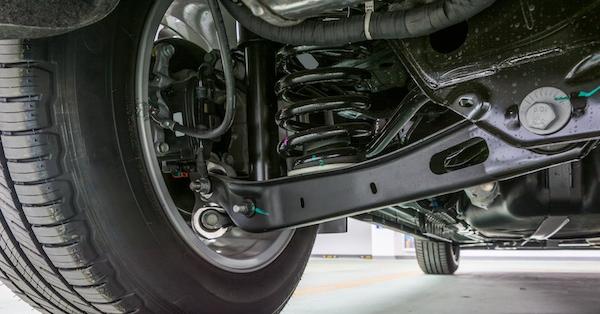A car’s suspension system is a critical buffer between its delicate machinery and the road. Car suspension parts include springs, shock absorbers, bars and force dampeners in a complex interlocking system along the bottom of the vehicle. This system also connects the wheels, brakes and steering column to the rest of the car and improves friction on the road. Though most people know the signs of a failing car battery or engine, it’s equally important to recognize a faulty suspension before it fails.
The Importance of a Healthy Suspension System
A healthy suspension system does much more than simply deliver a smoother ride. It grounds the car and makes sure the tires have good friction and contact with the ground. A suspension system also maintains wheel alignment, ensuring the wheels stay pointing in the same direction. A functioning suspension keeps the steering column functional as well.
Steering and braking are the two most important safety maneuvers every driver must perform hundreds of times per car ride. If any part of the suspension system is warped or degraded, the car will not handle or brake effectively. This makes a poor suspension a major safety hazard.
How a Suspension System May Break Down
While manufacturers design suspension systems to withstand bumps and potholes, they are far from foolproof. Hitting a bump or pothole at high speeds can generate force that breaks the springs or bars inside the suspension system. Shocks for cars can also degrade over time with rust and exposure to the elements.
Warning Signs That Your Suspension Is Damaged
A damaged car suspension is a dangerous problem, and like a serious disease, early detection is important. Here are a few early warning signs that your suspension needs tuning up:
- Car sinks to one side when parked
- Drifting or pulling to one side while not moving the steering wheel
- A tilting feeling when taking tight turns, as if the car wants to roll over
- A rougher ride with more bounces, dips and jolts
- Repetitive noises from the bottom of the car, such as knocking or rattling
- Poor steering responsiveness
There are many possible causes for each of these symptoms. Often, one small part of the suspension system, such as a shock or bushing, has broken or come loose. Suspension problems often affect one side of the vehicle, as the problem will come from the side with the broken component.
Costs of Neglecting Suspension Issues
If you catch and address a suspension issue early, you may only have to repair a small part. Remember that a suspension system has dozens of parts working together to support and stabilize the car. Any broken component throws the system out of balance and can lead to more broken parts.
Neglecting a suspension issue can warp the entire suspension system or cause a preventable accident. At the very least, a poorly balanced suspension will cost a fortune in wheel alignments.
If you know you’ll be driving over rough road conditions, consider heading off suspension issues before they happen with a 983-02-051 shock absorber for off-road driving. You can never be too careful when it comes to your car’s suspension system.

